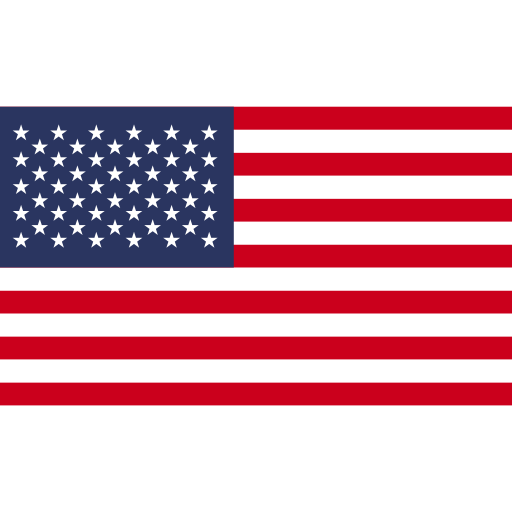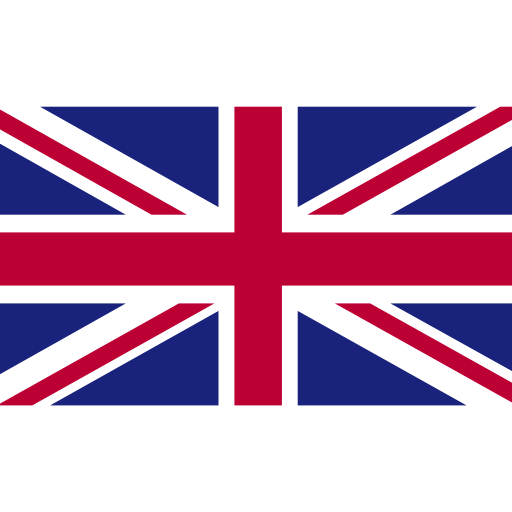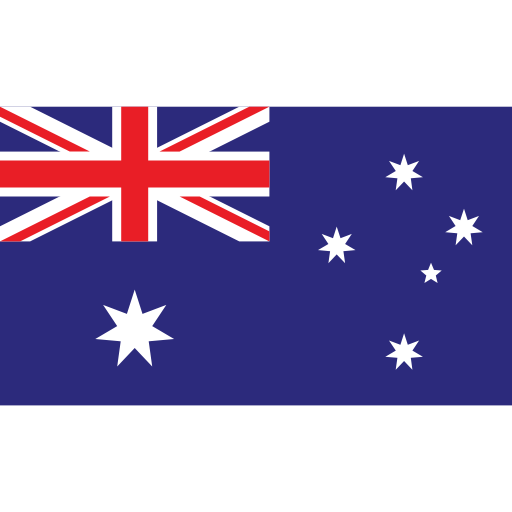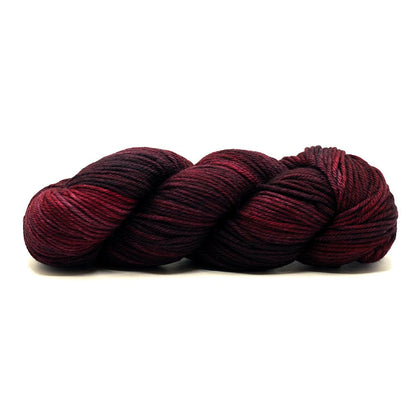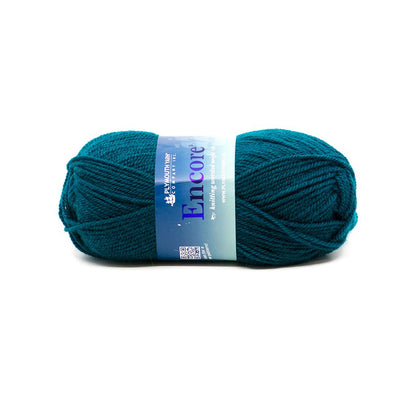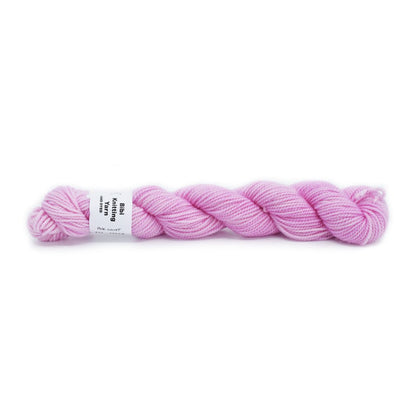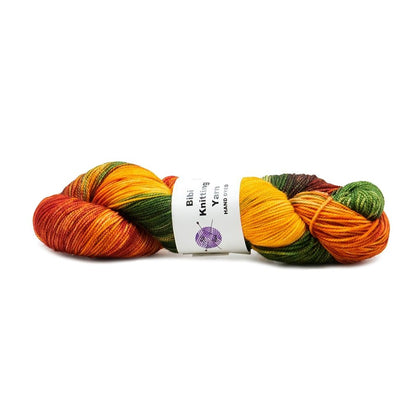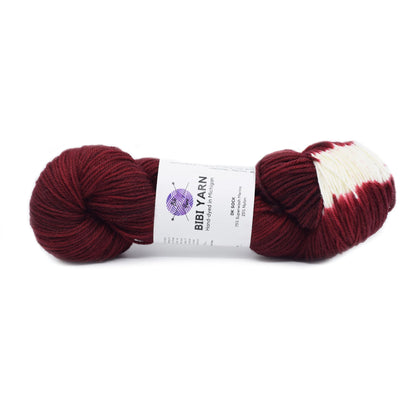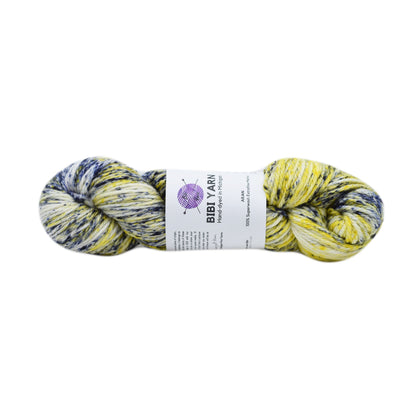A Beginner's Guide to Crochet Hooks & Knitting Needles

There are a staggering variety of options when choosing crochet hooks and knitting needles. Outside of the vast number of sizes, there are different lengths, materials, point shapes, shaft shapes and cord joins - to name a few variables!
We’ve provided an overview of the types of tools and materials you’ll run into during your crafting journey below, but ultimately, the best needle or hook is the one that works for you! The tool that allows you to create the projects you want in a comfortable fashion is going to be your best option.
Knitting needles and crochet hooks are commonly made of metal or wood with aluminium and bamboo being some of the most popular choices. While the descriptions we’ve included assume a traditional round hook/needle shape, square, triangular or other shaped needles will produce similar stitches, and may or may not be more comfortable for you. These will most likely alter your gauge from a standard round shaft, however, so be sure to test your gauge before embarking on any project!

- Metallic: Metallic hooks and needles have come a long way from clunky solid steel and are now often made of hollow steel or aluminium. Metal tools have a slick finish that can be matte or shiny. If you prefer to work with a direct lightsource, a shiny tool may prove too reflective for your eyes, so you may want to opt for a matte finish. Both options provide a smooth surface for yarns to travel over quickly, making these great for yarns that grip the needles (i.e. animal fibers), tight knitters and experienced makers who stitch confidently and quickly. Metal also allows for sharper points on needles and hooks which make them a good choice for thinner yarns, but some crafters may find the sharper points leads to more frequent occurrences of splitting the yarn.
- Wooden: Wooden tools make a good choice for beginners because even with a beautiful finish, wooden hooks and needles create more friction on the yarn, making it harder to drop stitches by accident. This friction can be frustrating with a stickier yarn like wool or alpaca, but is helpful when dealing with slippery yarns like cotton. If you find you have a looser overall tension in your knitting or crochet, these would also be a good choice for hanging on to those loops! Most wooden hooks and needles will have a moderate to blunt tip as super sharp points will break or wear down with use. There is also more potential for bending or breaking wooden instruments, especially the smaller sizes, so some care will need to be taken.
-
Acrylic: Acrylic or plastic tools are extremely lightweight and are naturally flexible - especially at the smaller sizes. This can be a challenge for heavier yarns or high stitch quantities, but they are a wonderful choice for jumbo-sized projects! Large sized hooks/needles (think broom handle thickness and larger!) made of plastic will remain light, and because this material creates a more rounded tip, the tools are well-suited for not splitting super bulky and jumbo yarns! These rounded tips are not ideal for all stitch patterns, and the finish on these tools will create quite a bit of drag which can be troublesome for tight-tensioned crafters.
Beyond the material the tools are made of, there are different shapes and accessories to consider.
Knitting Needles
-
Straight Needles: Straight needles are what most people think of as they are the traditional straight shafted tool with a cap on one end to prevent stitches from falling off. These are most likely what you were taught to knit on or would consider for a first purchase. Straight needles are limited, however, because they have a finite capacity for stitches and only allow for flat knitting (knitting back and forth to create a one dimensional piece of fabric). Projects like scarves, dishcloths and other small or narrow pieces like a sweater sleeve are good choices for straight needles.
-
Double Pointed Needles: Double pointed needles (also known as DPNs) remove the cap from the end of straight needles and have - surprise! - points on both ends! Typically sold in sets of four or five needles, DPNs have the ability to work as straight needles for knitting flat, but can also be arranged to work in the round (knitting in a circular fashion to create a tube of fabric). This process allows a knitter to create very tight tubes, very large tubes (just add another needle!), and makes finishing projects like hats, sock heels and cord edges much easier. DPNs can be used for projects as large as sweaters and coats to tiny baby socks and caps.
-
Circular Knitting: Needles Circular knitting needles are appropriately named due to their ability to create circles or tubes of knitted fabric. While DPNs use multiple needles to manage the circular shape, these tools use two needles connected by a cord to create the shape. Circular needles can be used to knit flat, and depending on the cord length, can create larger or smaller circumferences. Projects like socks can be knit using the magic loop method where a longer cable is used for the small circumference. Larger items like the body of a sweater can be made easier with circular needles as they remove the need to seam pieces together.
-
Interchangeable Sets: The versatility of circular needles goes a step farther with the option for interchangeable sets. These tools have needle tips with different cords or cables that can be screwed on to generate a wide range of sizes. It is important to tighten the join between cord and needle to avoid losing a tip mid-project (anyone else have this happen?!), and you’ll want a set with a smooth connection between the needle and the cord so your yarn doesn’t snag. Interchangeable sets can be a bit of an investment, but if you knit many different items of various sizes and thicknesses, it could prevent having to purchase multiple fixed needles.
-
Cables: While on the hunt for knitting needles you may come across a specially labeled cable needle. These tools come in many forms, but are generally double pointed with a hook, bend or groove that holds stitches while cable patterns are being worked. There are metal options, wooden options, long needles, short needles, but ultimately it will come down to your method for cabling and which shape best protects your stitches from falling. A nice tool to have, you can also sub in a DPN or even tapestry needle for a cable needle in a pinch!

Crochet Hooks
Similar to knitting needles, crochet hooks have many variations that appeal to different crafters. The most noticeable difference among hooks is the handle. Because the yarn does remain on the crochet hook, the handle of the crochet hook does not need to be the same diameter as the hook itself. Many options do have thin shafts, however, which on large projects can be uncomfortable, so it’s important to find a handle that’s comfortable for your hands! There are ergonomic styles to aid with grip and relieve wrist pain. There are wooden handles on metal hooks. There are covers you add on such as inexpensive foam that can provide extra cushion!
The hook shape does vary from company to company in three primary ways. The first is the point on the tip of the hook. Some makers prefer to have a sharper point that helps move the tool through the stitch, while others want a more rounded end so as not to split the yarn. The second difference comes at the throat or opening of the notch. You’ll notice some have a thinner or sharper end to grab the yarn. This can provide a little extra grip on the yarn while a smoother, rounder transition into the throat helps the yarn slide on - and potentially off! - the hook a bit easier.
Finally, the third main difference with hooks is an in-line versus tapered shaft. The tapered shaft narrows at the throat of the hook while the in-line has a constant thickness with an opening at the hook. Both styles produce beautiful crochet fabric, but it can be easier to maintain consistent stitches with in-line style hooks, which does make them a frequently suggested option for beginners.
Tunisian Crochet Hooks
Tunisian crochet hooks (also known as Afghan crochet hooks) are specifically designed for the Tunisian crochet method that has its own library of stitches. These tools have a hook on one end and a stopper on the other as stitches are held on the hook while working them. Hooks with a threaded end allow you to attach cables of various lengths for versatility. The longer the hook, or attached cable, the larger the project you could theoretically create. You may see double ended Tunisian hooks or single-end hooks connected via cable that are used for working in the round.
For the design of the hooks themselves - wood/metal, throat depth, shape, etc. - you can abide by the guidelines above for standard crochet hooks. Keep in mind, though, that as the movements of Tunisian crochet are different than standard crochet, you may find you favor a different style of hook, so don't be afraid to be adventurous and try out a few if you can!
While you could build out an impressive kit of tools for different projects, it bears repeating that the tools that are most comfortable for your hands and your style of crafting will be the best choices for you.
How did you determine your favorite tools? Did someone recommend a brand and you stuck with it? Was it trial and error? We’d love to hear your stories and recommendations in the comments below!
Sources:
The Principles of Knitting
Vogue Knitting: The Ultimate Knitting Book
The Spruce Crafts
Happily Hooked Magazine
